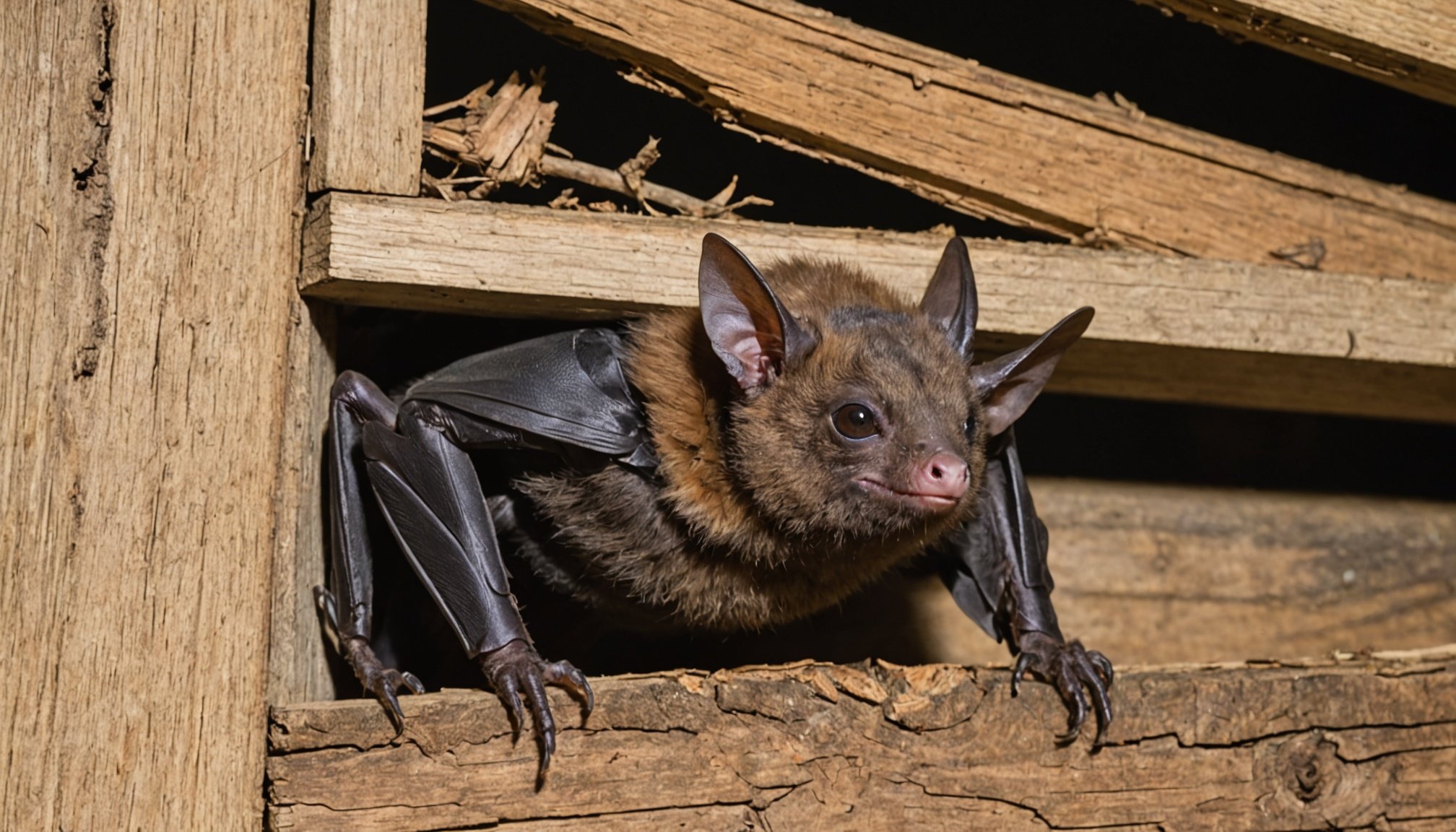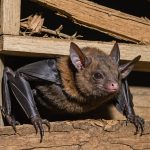Overview of Bat Species in the UK
In the UK, bats are an essential part of the local wildlife, playing a vital role in balancing ecosystems. Garden bat boxes offer a safe haven for these creatures, enhancing their presence in home landscapes. There are 18 species of bats known in the UK, with some more likely to inhabit gardens than others.
Let’s look at some common UK bat species often attracted to gardens. The common pipistrelle, one of the smallest bats, is frequently seen flitting around gardens, hunting for insects at dusk. Another garden visitor is the brown long-eared bat, recognisable by its distinctively large ears. These bats have an impressive manoeuvrability, allowing them to navigate through dense foliage effectively.
Cela peut vous intéresser : Ultimate guide to navigating wildlife with your cockapoo: safe training tips for uk park adventures
Bats are crucial for maintaining balance within the local wildlife. They are natural pest controllers, consuming vast numbers of insects and aiding in reducing gardening pests. Garden bat boxes can attract species like the noctule bat and the soprano pipistrelle, providing them a sheltered roosting space. By encouraging these species, homeowners contribute to bat conservation and biodiversity support.
Benefits of Garden Bat Boxes
Incorporating bat boxes into your garden is a simple yet effective way to contribute to wildlife gardening and aid in bat conservation. These unassuming structures offer crucial support to local ecosystems.
Lire également : Exploring Cutting-Edge Treatments for Chronic Kidney Disease in Senior Cats
Primarily, bat boxes enhance local biodiversity by providing safe and secure roosting sites for bats. As many natural habitats face destruction, these structures serve as vital refuges. They attract different bat species, which in turn contribute to a balanced ecosystem. Bats are known for their role in natural pest control. By consuming thousands of insects each night, they help maintain the ecological balance, reducing the need for chemical pesticides.
Additionally, supporting bats with dedicated spaces contributes to bat conservation efforts. Many bat species face threats from habitat loss and environmental changes. By integrating bat boxes into gardens, individuals can add to broader conservation initiatives. The presence of bats in your garden not only improves the environmental balance but also offers educational opportunities for those interested in wildlife gardening.
Overall, the benefits of bat boxes extend beyond individual gardens. They play a vital role in establishing a network of safe havens across urban and rural landscapes, fostering a healthier and more diverse ecosystem.
Installing Garden Bat Boxes
Creating a welcoming environment for bats in your garden enhances your local wildlife habitat. It starts with making informed choices about bat box placement.
Choosing the Right Location
Selecting a prime spot is crucial for effective bat box placement. Ideally, install boxes where they are exposed to direct sunlight for at least part of the day, preferably within 12 to 20 feet above the ground. This ensures that the temperature inside remains suitable for bats, particularly during cooler months. Avoid placing bat boxes near bright, artificial lights as this can deter bats from using them. Installation tips recommend keeping them at a reasonable distance from predator exposure points, like overhanging branches.
Installation Best Practices
When it comes to securely attaching bat boxes, use durable materials and ensure stable mounting. Installation tips stress the importance of using screws or strong straps that withstand weather conditions. Placing boxes under house eaves or on tree trunks offers natural shelter, aiding in weather protection and wildlife habitat integration.
Common Mistakes to Avoid
Mistakes, such as installing the boxes too low or in densely shaded areas, limit bat attraction. Placement near frequent disturbance areas should also be avoided to create a safe and appealing environment. Proper planning and installation tips facilitate a thriving bat-friendly setting.
Maintaining Your Bat Boxes
Caring for your bat boxes is essential to ensuring successful wildlife support. Regular maintenance involves systematic checks and cleaning protocols. Begin by inspecting your bat boxes twice a year, ideally in early spring and late autumn. This helps ensure they are in prime condition for bats returning from hibernation or when they are likely to vacate.
When performing a visual check, note any debris or signs of damage to the structure. Cleaning the bat box carefully is crucial, as residues or pests can discourage bat occupancy. Ensure there are no chemicals used near or in the bat box, as they can be harmful to the bats.
Signs of usage, such as bat droppings below the box or sounds during early dusk hours, confirm current occupancy. If you identify an issue like inadequate occupancy, consider repositioning the box or reducing direct light exposure. Factors such as location and direction can impact usage; most experts suggest placing boxes in sunny spots with minimal disturbance.
Lastly, if your bat box appears unused despite optimal placement, consult a wildlife expert to evaluate any unique field conditions impacting bat behaviour. Proper bat box care not only encourages occupancy but also supports thriving local wildlife ecosystems.
Relevant Legislation and Protection
In the UK, bat legislation offers robust protection to these nocturnal creatures under various laws. Central to this is the Wildlife and Countryside Act 1981, alongside the Conservation of Habitats and Species Regulations 2017. These laws make it illegal to disturb, harm, or kill bats and damage their roosts without a licence. Such wildlife protection measures underscore the necessity of adherence to these regulations, highlighting the critical role that bats play in our ecosystems.
Understanding local wildlife regulations is fundamental for anyone engaged in activities that might impact bats or their habitats. Consulting resources such as government websites or wildlife organisations can provide essential guidance and support.
UK laws prioritising bat conservation serve multiple purposes; they protect biodiversity and ensure environmental health, and promote awareness about the ecological significance of bats. Those involved in land development or renovation projects are particularly encouraged to stay informed, as failing to comply can result in hefty fines and legal repercussions.
Conclusively, the importance of respecting bat legislation and its associated restrictions cannot be overstated. By adhering to these laws, individuals contribute to the broader effort of maintaining biodiversity and environmental stability in the UK.
Conservation Efforts for Bats
Conserving bat populations has become a vital concern, both at the national and local levels. Various organizations focus specifically on bat conservation, aiming to protect these important creatures. The Bat Conservation Trust in the UK serves as a primary example, working rigorously to advocate for the preservation of bat habitats and their species.
Local initiatives often play a crucial role in supporting larger conservation goals. Community involvement is encouraged through volunteer opportunities, which are designed not only to protect bat populations but also to educate participants. Volunteers can partake in activities such as habitat restoration and bat surveys, providing a hands-on approach to conservation.
There have been numerous successful case studies highlighting effective conservation efforts within the UK. The South Lancashire Bat Group, for instance, collaborates with local councils and the community to manage natural areas, ensuring bats have safe environments to thrive. Their initiatives include building bat boxes and organizing events to raise awareness.
By promoting collaboration between organizations and communities, these initiatives successfully work towards the goal of saving bats. Through sustained efforts and raising public awareness, more individuals can be empowered to join the fight in preserving bat biodiversity.
Additional Resources and Support
Gaining a deeper understanding of bats and their conservation efforts requires tapping into various wildlife resources. By expanding your knowledge through recommended reading and useful online resources, you can become more involved in conservation networking, helping protect these fascinating creatures.
Recommended Reading
For those keen on bat education, exploring literature on the topic is invaluable. Books like “The Secret Lives of Bats” by Merlin Tuttle offer insights into the captivating world of these mammals. Articles in wildlife magazines and scientific journals can provide data-driven perspectives on conservation strategies, enhancing your bat education journey.
Useful Online Resources
There are numerous online forums and websites dedicated to bats and wildlife resources. Forums such as Bat Conservation Trust and platforms like iNaturalist offer spaces for conservation networking, allowing enthusiasts to share knowledge, ask questions, and contribute to citizen science projects. These resources can significantly augment your understanding and appreciation for bats.
Local Wildlife Organizations
Engaging with local wildlife groups can enrich your approach to bat conservation. Many organizations offer volunteering opportunities, events, and workshops. These initiatives offer practical ways to partake in conservation networking and can typically be contacted through their websites or social media platforms. Connecting with these groups fosters community efforts, emphasizing the importance of bat education and ecological preservation.










